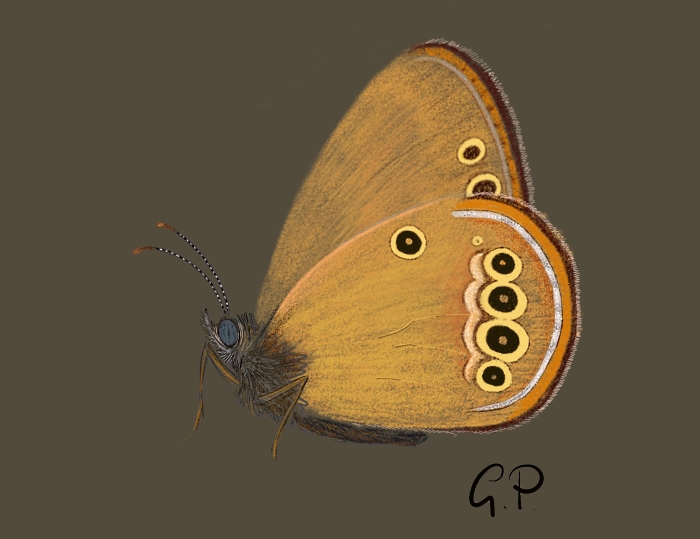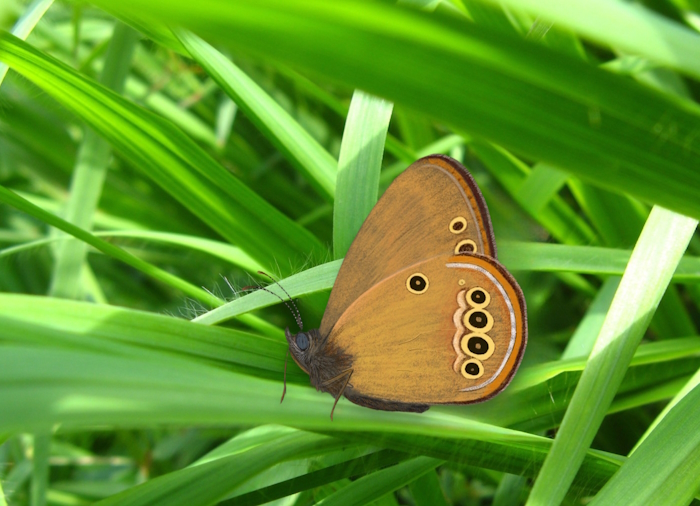

Male, painted from a set specimen and photos of live butterflies (then copied and pasted into grass!)

Distribution
I have never see this rare wetland butterfly but I painted a picture of it for the appendix of my Villars-Gryon book, as it is on the Swiss list - so thought I may as well include a page here. More than other wetland heaths, the false ringlet always flies in the proximity of rivers or lakes, where it frequents wet grassland, marshes, reedbeds or wet areas in woods. Like the closely related scarce heath, it is a seriously threatened and vulnerable species, prone to local extinctions and because of its small, scattered populations, unlikely to return after it has gone from a site.
The false ringlet is very dark above and chestnut below. There is a complete set of yellow-ringed, white-pupilled ocelli on the hindwing, but the uppermost of these is displaced basally, out of line with the others and inside the white or cream band. This separates it easily from the scarce heath. There is a silvery ribbon inside the wing margins.
The foodplants are various sedges and grasses, including meadow grasses and characteristically bog or moorland species. It is the caterpillars that hibernate and the adults fly in a single generation from June to August.